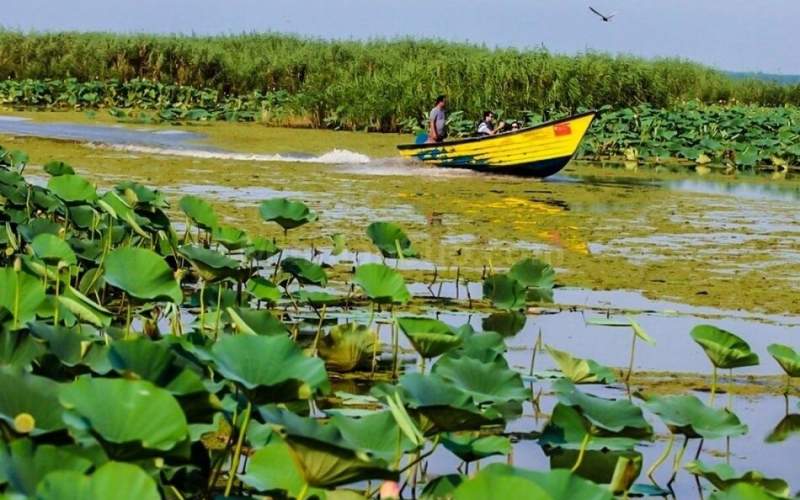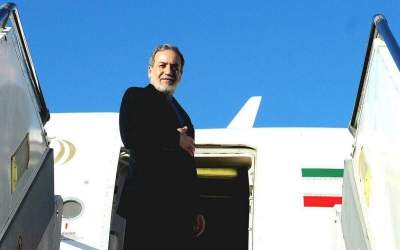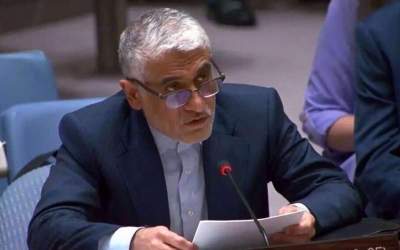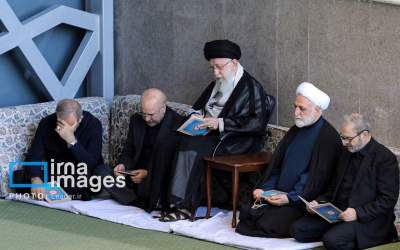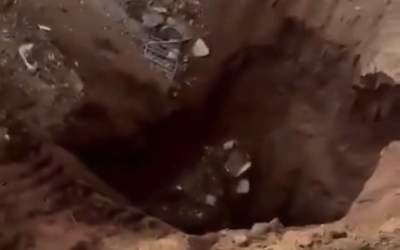The Iran Project
: Bilateral relations and cooperation between Iran and Japan can be broadened, especially in environmental fields, Ali Salajeqeh, head of the Department of Environment (DOE), has said.
Friday 23 February 2024 - 14:56
Story Code : 415924
Source : Tehran Times
‘Tehran, Tokyo can further expand environmental cooperation’
He made the remarks on Thursday while visiting the Japanese Embassy in Iran on the occasion of Japan’s National Day.
The cooperation is expected to continue towards capacity-building, modern technologies, and knowledge-sharing for waste management, protection of wetlands, prevention of dust storms, pollution control, and climate change, Salajeqeh added.
Referring to the efforts of the two countries to boost cooperation, Salajeqeh expressed hope that bilateral relations and cooperation between Iran and Japan expand further, especially in environmental fields.
"The friendly relationship between the two countries shows that there are many capacities for the development of bilateral relations and expansion of cooperation in the regional and international arenas,” he further noted.
Lake Urmia restoration program
The lake’s restoration program was established in 2013 and aims to restore the lake within a 10-year program. The contribution is being implemented as a component of UNDP’s ongoing Conservation of Iranian Wetlands Project – a joint project between Iran’s Department of Environment and UNDP.
Lake Urmia in the northwestern West Azarbaijan province started to dry up in the 2000s. The lake is the largest lake in West Asia and the sixth-largest Salt Lake in the world with a water surface area of 5,000 to 6,000 square kilometers.
Since 2014, together with the Government of Japan, UNDP has been supporting Lake Urmia restoration efforts. The project covers 202 villages in northwestern East and West Azarbaijan provinces.
The project aims to better the application of sustainability models in Lake Urmia and its adjacent wetlands, promoting local participation in 170 villages around the lake basin as well as enhancing the livelihoods and resilience of local communities through a more integrated approach.
In February 2021, the Government of Japan contributed $3 million to help revive Lake Urmia through the United Nations Development Program (UNDP). This was Japan’s eighth contribution to UNDP Iran.
In 2023, Claudio Providas, the UNDP resident representative in Iran, said that sanctions have had no effect on providing financial support to protect Iran's wetlands and revive Lake Urmia, in particular.
Providas pointed out that the Japanese government, as the financial sponsor of the project, continues to provide aid.
“Over the past 10 years, Japan has made generous contributions to the global plan to protect Iran's wetlands and has contributed one million dollars annually, which is quite acceptable,” he said.
He continued: “In the last 5 years, Iran has tried different strategies to save Lake Urmia and has been trying to find out whether it should follow the same previous methods to restore the lake or it needs to try out new solutions.”
“During the last decade, the financial aid of the Japanese government has protected Iran's wetlands and this plan has had some achievements. However, it should be noted that Japan's aid by itself was not expected to save Iran's wetlands or even Lake Urmia,” he added.
Conservation of wetlands
Conservation of Iranian Wetlands Project aims to focus on better management of wetlands in accordance with climate change, improving the management of natural resources, and highlighting the role of public participation and raising awareness.
The Japan International Cooperation Agency (JICA) has supported the Iranian government in conservation of the Anzali Wetland since 2003 through “The Study on Integrated Management for Ecosystem Conservation of the Anzali Wetland (2003-2005)” and “Anzali Wetland Ecological Management Project (2007-2008, 2011-2012)”.
In 2006, DOE and the JICA signed a two-year agreement to start the Anzali Wetland Ecological Management Project to save the deteriorating Anzali wetland in the northern province of Gilan.
Covering more than 19,000 hectares, Anzali Wetland is located near the northern port city of Bandar Anzali, neighboring the Caspian Sea. The wetland was designated as a Ramsar site on June 23, 1975. It is fed by several rivers and separated from the Caspian Sea by a dune system.
The lagoon is home to submerged and floating vegetation and also extensive reed beds. It bears international importance in terms of breeding, staging, and wintering waterbirds.
Anzali Wetland has suffered huge sediment and sludge accumulation due to the entrance of domestic and agricultural sewage from five surrounding cities, which resulted in a decrease in the wetland’s depth and capacity along with threatening biodiversity.
One of the most important concerns regarding Anzali Wetland is a constant drop in depth which was 11 meters before while shrinking to 1 meter or even 50 centimeters in recent years.
In July 2023, according to the reports, the Conservation of Iranian Wetlands Project (CIWP), a joint initiative between the United Nations Development Program (UNDP) and the Government of Japan, led to saving water by 27 percent for irrigation in the country.
The three-year (2021-2024) cooperation between the DoE, Japan, and UNDP Iran has been initiated to up-scale successful practices to additional pilots in the Urmia Lake basin and two new replication sites including Shadegan and Bakhtegan Wetlands.
The use of some innovations, including subsurface irrigation systems for vineyards, has reduced irrigation water by more than 50 percent, IRNA quoted Mehri Asna-Ashari, the CIWP manager, as saying.
In Iran, 141 wetlands with ecological value with an area of over 3 million hectares have been identified, of which 25 wetlands are designated as wetlands of international importance (registered in the Ramsar Convention) covering more than 1.4 million hectares and four sites are biosphere reserves.
The third phase of the project started in June 2020, which outlined key strategies for the next five years, between Iran and the United Nations Development Program (UNDP).
Environmental protection
Iran has a high diversity of species due to geographical conditions, climatic diversity, huge water resources of the Caspian Sea in the north and the Persian Gulf, and the Sea of Oman in the south.
According to the latest studies, about 1,300 species of vertebrates, including mammals, birds, reptiles, amphibians, and aquatic fish, about 30,000 species of invertebrates, and 8,000 species of plants have been identified in the country.
Unfortunately, over the past two decades, human activities have led to the alarming degradation of ecosystems, and the deletion of genes, species, and biological capabilities; Human threats to biodiversity have accelerated the most over the past 50 years over the entire history of human life.
On November 17, 2015, Ayatollah Ali Khamenei, the Leader of the Islamic Revolution, announced the general policies on the environment, emphasizing the need for comprehensive, harmonious, and organized management of vital resources based on ecological capability and sustainability, particularly by increasing capacities and appropriate legal and structural capabilities accompanied by public participation.
President Ebrahim Raisi has highlighted the importance of environmental protection, emphasizing that the preservation of the environment is prior to every development.
Environmental protection will lead to power, security, investment, and production growth in the country, he said.
Both people and NGOs have an effective role to play in the protection of the environment, and they should be given a chance to play their role, he added.
Reporter : Editorial of The Iran Project
# Tags
